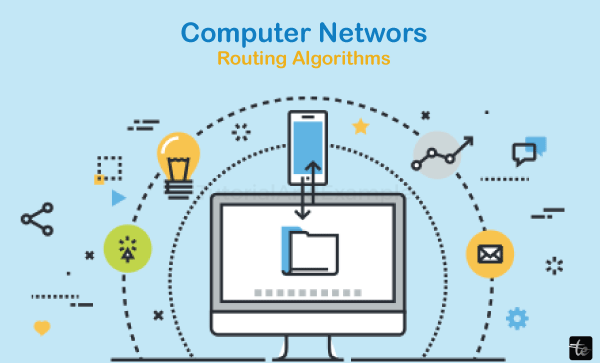Static Routing Algorithms in Computer Network
Static routing is a primary method in computer networks that guides data packets from one device to another. Unlike dynamic routing, which adjusts routes automatically, static routing relies on manual configuration by network administrators. It's like drawing fixed paths on a map to direct packets to their destinations.

This approach is easy to manage, especially in smaller networks with simple layouts. In static routing, each network device, called a router, is programmed with specific instructions on forwarding data packets. These instructions include destination network addresses and corresponding next-hop routers, which act as waypoints along the route.
When a router receives a data packet, it checks its routing table to find the best path and forwards it accordingly. Since static routing doesn't learn or adapt, it uses fewer resources and works well for stable and secure data flow. However, dynamic routing protocols may be more efficient and easier to handle for more extensive networks with frequent changes.
Key Elements
1. No Automatic Updates: Static routing doesn't change routes automatically; administrators must manually update them.
2. Easy Configuration: Setting up static routes is straightforward and suitable for smaller networks or simple setups.
3. Stable Networks: Static routing is best for stable networks with minimal changes in topology.
4. Floating Static Routes: Backup routes can be used for redundancy if primary paths fail.
5. Reduced Overhead: It consumes less bandwidth and processing power since routes only sometimes recalculate.
6. Defined Administrative Distance: Routes have predetermined priorities for choosing the best path among multiple routes.
7. Explicit Control: Administrators have complete control over routes, guiding data packets on specific paths.
8. Legacy Device Compatibility: It works well with older network devices that don't support dynamic protocols.
Working condition of the static routing algorithm
1. Routing Table Setup: Manually configure the routing table for each network with destination addresses and next-hop routers.
2. Host Configuration: Set the hosts' default gateway to match the local router's IP address for proper packet forwarding.
3. Packet Forwarding: When a host sends data outside its network, it forwards packets to the local router, which uses the routing table to find the best route.
4. Controlled and Secure: Static routing offers manual control, no automatic updates, and enhanced network security.
Example
1. Router A is configured with static routes for Network Y via Router B and Network Z via Router C. Router B is configured with static routes for Network X via Router A and Network Z via Router C. Router C is configured with static routes for Network X via Router A and Network Y via Router B.
2. Now, let's illustrate communication between devices in different networks with an example: Suppose a device in Network X wants to communicate with a device in Network Z. The data packet is sent from the device in Network X to its default gateway, Router A.
3. Router A checks its routing table and determines that the destination IP address belongs to Network Z, and the next-hop router to reach it is Router C. Router A forwards the data packet to Router C based on the static route it has for Network Z.
4. Router C receives the packet, looks at its routing table, and finds that the packet is destined for Network Z. It directly delivers the packet to the device in Network Z. Similarly, each router in the network uses its static routing table to forward packets to the appropriate next-hop router, enabling communication between devices in different networks.
5. Static routing provides predictable paths and controlled communication between the networks. It's an easy-to-set-up and manageable solution for smaller networks with stable topologies.
Advantages
1. Less Vulnerable to Misconfigurations: Static routing minimizes the risk of accidental misconfigurations, enhancing network stability.
2. Reduced Network Dependency: Static routing provides network autonomy, useful in isolated or disconnected segments.
3. Easier Network Integration: Direct configuration of new routes simplifies network integration without waiting for updates.
4. Better Traffic Control: Static routing allows precise control over traffic paths, aiding in congestion management.
5. Cost-Effectiveness: Static routing is cost-effective as it doesn't require dynamic routing protocols, reducing equipment and operational expenses.
6. Ease of Troubleshooting: Manually configured routes simplify troubleshooting, enabling quick identification and resolution of network issues.
7. Stability in Critical Environments: Static routing ensures stable and reliable network communication, which is crucial in critical environments.
8. Lower Bandwidth Usage: Static routing reduces unnecessary bandwidth consumption by avoiding frequent route updates.
9. No Processor Intensive Calculations: Static routing doesn't burden network devices with continuous calculations, leading to improved performance.
10. Suitability for Specific Use Cases: Ideal for scenarios requiring predictable and controlled routes, such as VPN setups or specialized networks.